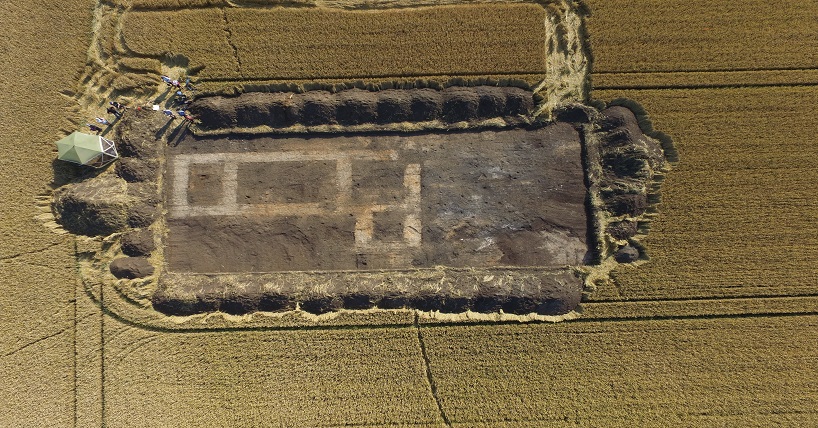Archaeologists Were Looking for a Medieval Hermitage. They Found a ‘Monumental’ Prehistoric Henge
The site in eastern England may have served as a sacred space for groups across thousands of years

Around 700 C.E., St. Guthlac, the son of a nobleman, gave up a life of riches to live in solitude as a Christian monk. After spending two years at a monastery, he left to live as a hermit in Crowland, now a town in Lincolnshire, England. Others had previously tried and failed to settle in the area, which was said to be haunted by evil spirits and demons.
Guthlac established a hermitage in Crowland, where he lived until his death in 714. His legacy endured, and his followers later founded Crowland Abbey in his memory. While details about Guthlac’s life were documented in the Vita Sancti Guthlaci (Latin for Life of St. Guthlac), the exact location of the hermitage has been a mystery.
“For years, archaeologists have tried to find its location,” according to a statement from England’s Newcastle University. “While Anchor Church Field [located near the abbey] was widely held to be the most likely site, the lack of excavation and the increasing impact of agricultural activity in the area [had] prevented a comprehensive understanding of the area.”
Hoping to locate the hermitage, archaeologists finally excavated the field in 2021 and 2022. According to a recently published study in the Journal of Field Archaeology, they discovered a site that was thousands of years older: the remains of a “monumental” prehistoric henge. Measuring nearly 250 feet across, it was constructed during the Neolithic or Early Bronze Age (between 3000 and 1600 B.C.E.).
The researchers say it’s one of the largest henges ever discovered in the region. They weren’t able to excavate the entire henge—but with the help of aerial photography and satellite imagery, they estimated its age and size, according to McClatchy’s Irene Wright.
“A monument of this scale suggests that Crowland was an important ceremonial center and focal point in the late prehistoric period,” lead author Duncan Wright, an archaeologist at Newcastle University, tells Newsweek’s Aristos Georgiou. “In prehistoric times, the henge would have formed a large circular enclosed space, with a huge bank and ditch running around the outside. It may have had one or more burial mounds built inside it during the Bronze Age.”
/https://tf-cmsv2-smithsonianmag-media.s3.amazonaws.com/filer_public/9f/d5/9fd5c594-4dea-40f8-b85d-38f176d2b4db/comb-duncan-wright_grid.jpg)
After a long period of abandonment, the henge’s interior was reoccupied during Guthlac’s lifetime (around the seventh century). The recent excavations revealed numerous artifacts—including pottery, two bone combs and fragments of glass from a drinking vessel—dating to this period. The henge’s remains would have been visible at that time, and the researchers think the site’s long history could have appealed to figures like Guthlac, though they caution that no existing evidence shows a direct connection.
“Although the Anglo-Saxon objects we found cannot be linked with Guthlac with any certainty, the use of the site around this time and later in the medieval period adds weight to the idea that Crowland was a sacred space at different times over millennia,” says Wright in the university’s statement.
In the 12th century, the abbots of Crowland constructed a hall and chapel complex at the site, which were also uncovered during the recent digs. According to the researchers, this chapel may have been dedicated to St. Pega, Guthlac’s sister, who was also a venerated hermit.
“We know that many prehistoric monuments were reused by the Anglo-Saxons, but to find a henge—especially one that was previously unknown—occupied in this way is really quite rare,” Wright adds.